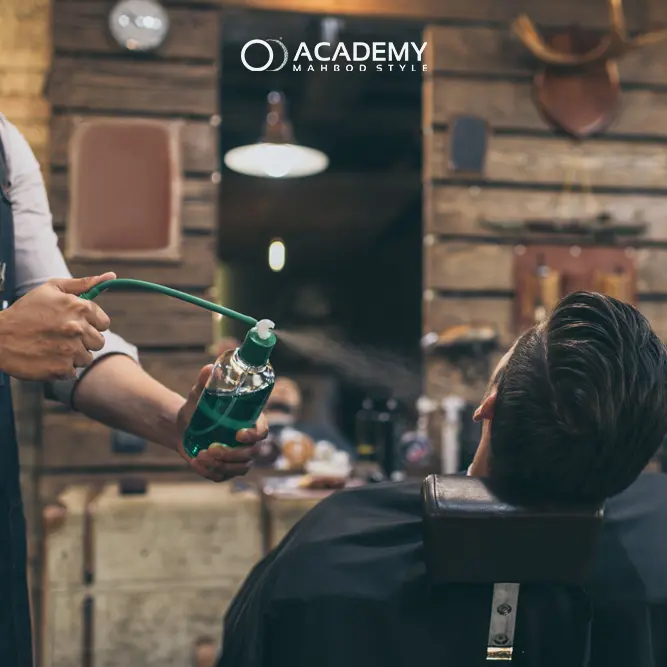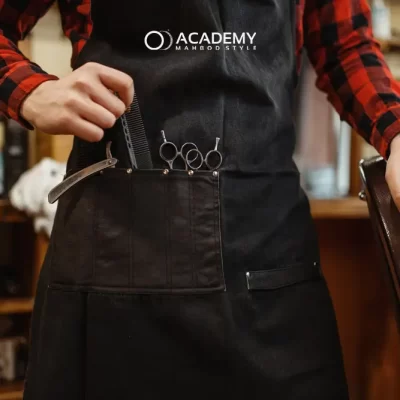Getting to know the job of a hairdresser

Getting to know the job of a hairdresser
No one can deny the effect of hair on people’s appearance. So it’s no surprise that the salon hair care market accounted for $64.8 billion in sales in 2013 alone! Hairstylists act as the market authority for hair care services. Their influence on the industry is undeniable. In addition to this, taking care of the skin, removing unwanted hair, and trimming the face and eyebrows are other duties of hairdressers, all of which play an important role in people’s lives. All people need to go to a hairdresser to feel more beautiful so that a hairdresser can create a more beautiful face by providing care and beauty services. In this article, we are going to learn about the job of a hairdresser.
Duties of hairdresser
In this episode, we take a look at a day in the life of a hairdresser. In a typical day on the job, stylists provide a variety of hair care services, including washing, cutting, coloring, styling, and blow-drying. Their day-to-day responsibilities are broader than that and often include:
• Advise clients on their hair care needs
• Mastering all kinds of hairstyles and haircuts
• Analyzing hair, facial features, and customer needs and recommending beauty treatments
• Hair styling, extensions and wigs, and types of hair textures
• Face and eyebrow correction
• Waxing and waxing
• Shaving hair using scissors, clippers and razors
• Maintenance and cleaning of cosmetic tools and equipment
• Use curlers, hair irons
• Use of natural and fantasy hair color
• Scalp and hair treatments
• Massaging scalp, neck and face
• Using hot towel treatment methods
• Nail design and planting
• Pedicure and manicure
Skills required for a hairdressing job
Depending on the role that hairdressers play in the salon, different skills are also required. A stylist may be responsible for stocking the salon, ordering new products, stocking display shelves, and even marketing for the salon.
Hairdressers must have these skills in their work:
• Having knowledge and awareness to provide beauty services
• Ability to assess customer needs
• Perform tasks according to service quality standards
• Having knowledge about chemical compounds and properties of materials they use.
Suitable characters for the hairdresser job
1. Successful hairdressers must be able to work under pressure.
2. They have excellent communication and interpersonal skills.
3. They are very patient.
4. They can work on their feet for hours.
5. They pay attention to small details
6. They listen to the wishes and needs of customers.
7. They are familiar with the latest beauty fashions.
8. They attract customers’ trust quickly.
9. They follow safety and health standards well.
How to enter the hairdressing profession
Although it seems that hairdressers only work in a hair salon, hairdressers who study the specialized branches of this job can work in other places. Like those who know head and face massage, they can work in swimming pools.
But the first step in this business is usually to rent a seat in a hall. Hairstylists who work as independent contractors are usually required to rent a chair in a salon for a weekly or monthly fee, while people employed in salons are usually paid a commission as a starting point and are paid based on the services they provide and The products they sell. As their career progresses, hairdressers are usually able to attract many clients and then open their own salons.
Training courses required for hairdressing jobs
Everywhere in the world, hairdressers must have a degree in hairdressing to do their work. In some countries, such as Iran, just having a degree and a work permit is not enough, and other special permits are also needed to start working, but even so, with a degree, you can allow yourself a seat in a beauty salon and work. But to set up your own unique beauty salon, you need more licenses.
But before all this, you have to complete training courses to have a hairdressing degree. State licensing exams generally include both practical and written sections.
Hairdressing courses offered through cosmetology schools are often completed in less than a year, while education in the field generally takes longer, with some courses leading to a university degree.
Courses in a hairdressing program often include:
• Knowing the types of shampoos and hair care products
• Hair and scalp analysis
• Identifying scalp disorders and diseases
• Hair washing methods
• Hair and scalp treatment
• Knowledge of color theory, applications, and color techniques
• Knowing the theory and color correction techniques
• How to shave hair
• Mastery of all types of hairstyles
• Hair cutting techniques
• Laws and statutes of the country
• Management and ethics at work
• Interpersonal and sales skills
• Disinfection, hygiene and safe work
Internships are common for hair salons and allow graduates to gain valuable practical experience while building their skills and receiving a paycheck. Apprenticeships may be completed after graduation from a cosmetology program, or they may be completed in lieu of a formal program. However, it is important for candidates to remember that the apprenticeship requirements for a license are different from the cosmetology school requirements in terms of the number of hours of training required. Many states, such as California, oversee formal apprenticeship programs, which require students to complete a two-year full-time program that includes full-time work with a board-licensed salon.
Challenges facing the hairdresser
Every job has different challenges. There is no job in the world without challenges and problems, but if you are interested in work, you can easily cope with these challenges.
1. The effect of continuous contact with cosmetics and hair color on the respiratory tract
2. Joint pains caused by standing continuously
3. Facing different tastes
4. Sufficient mastery of hair-cutting and styling techniques
